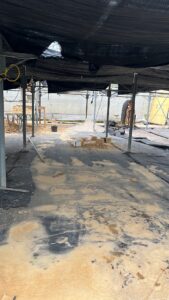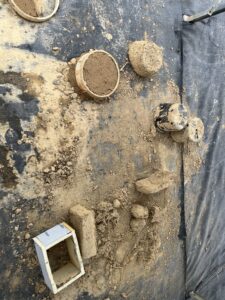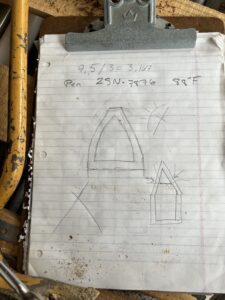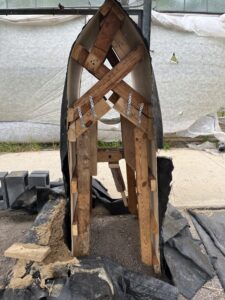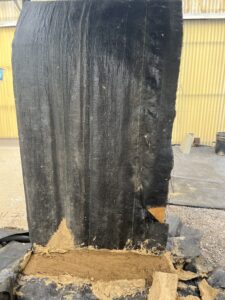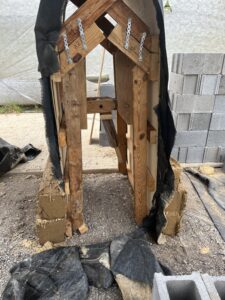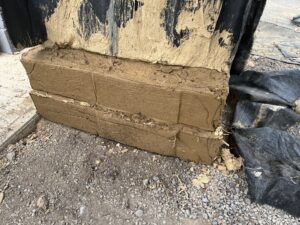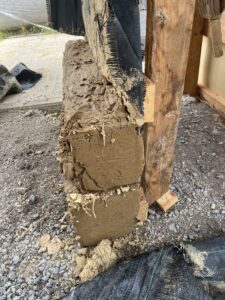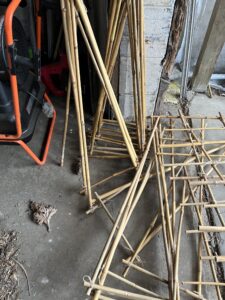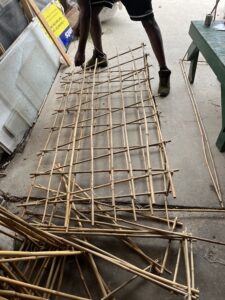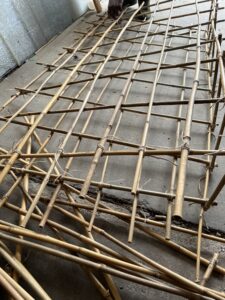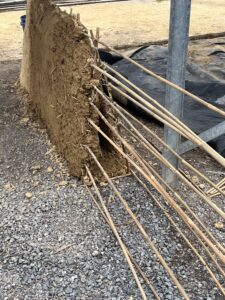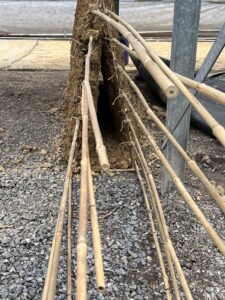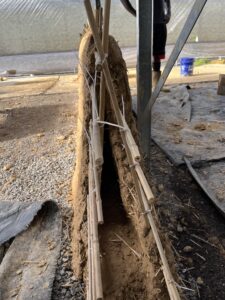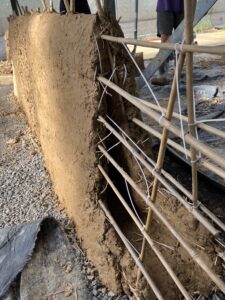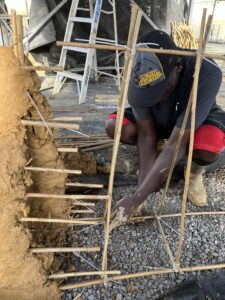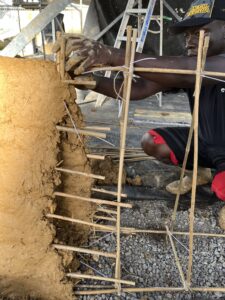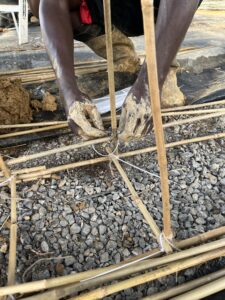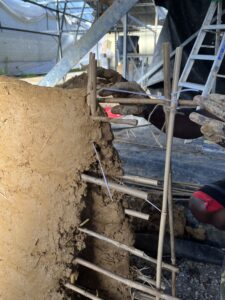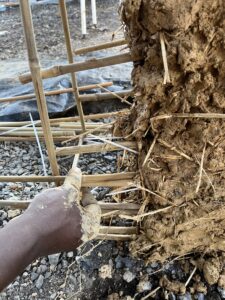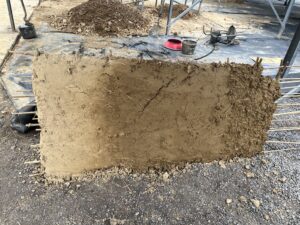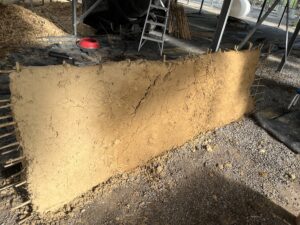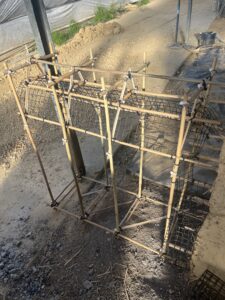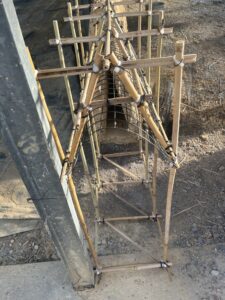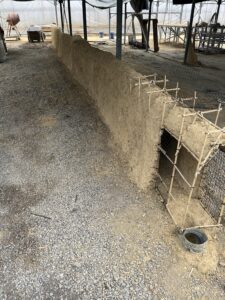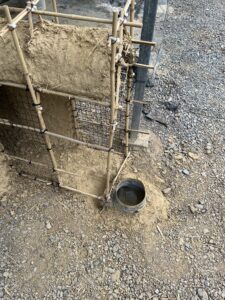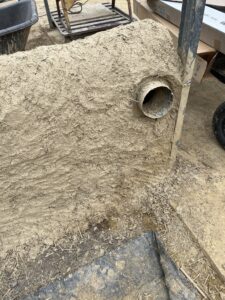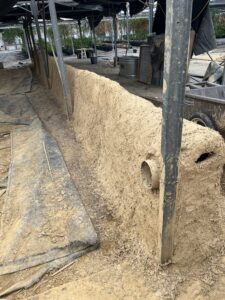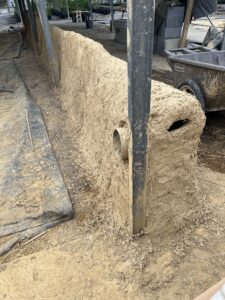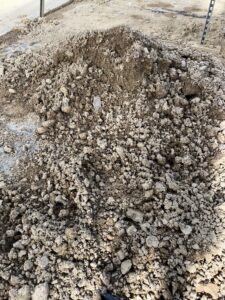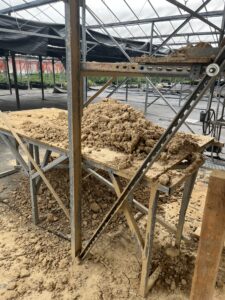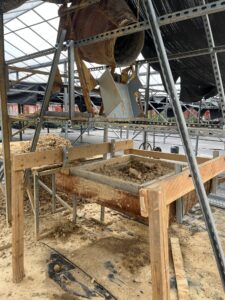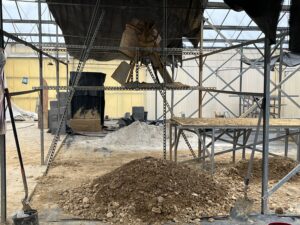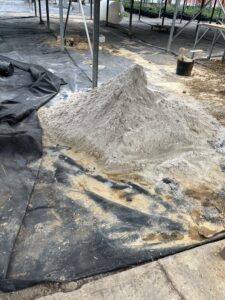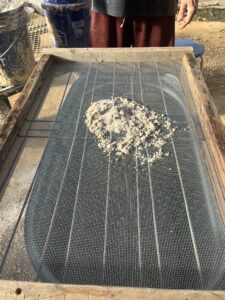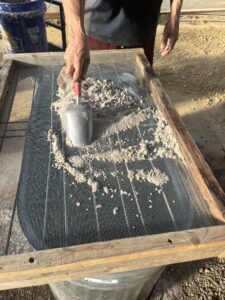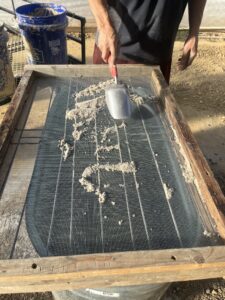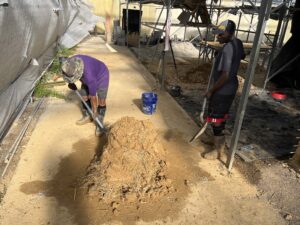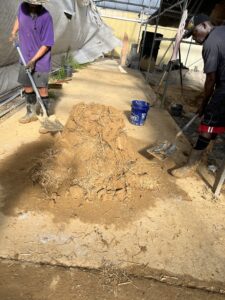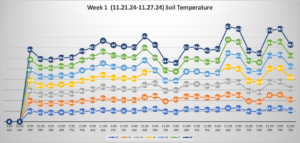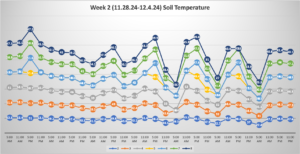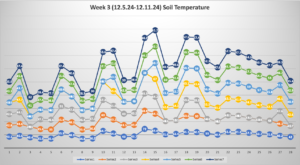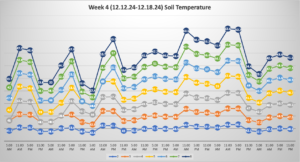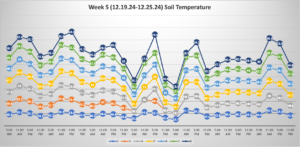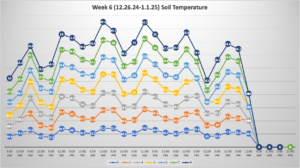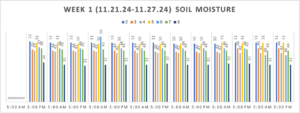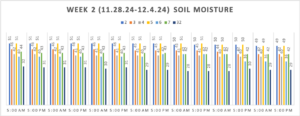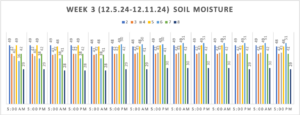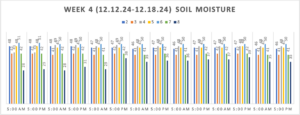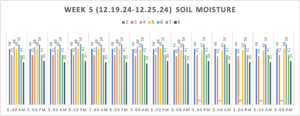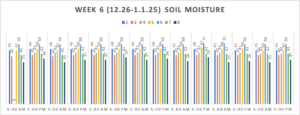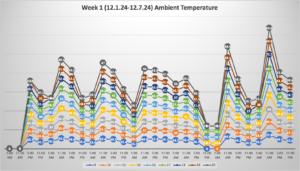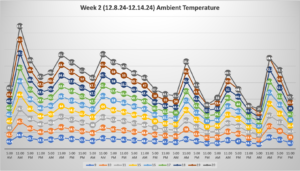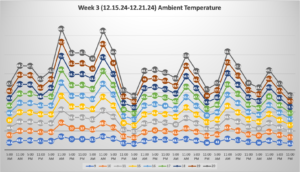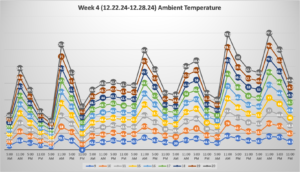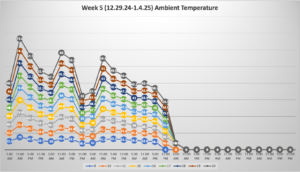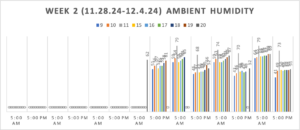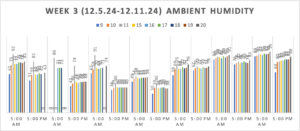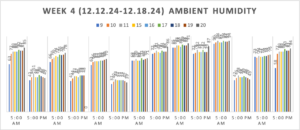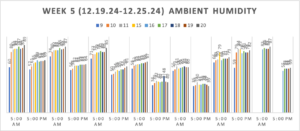Progress report for FNE23-062
Project Information
This project seeks to analyze the effectiveness of off grid methods of heating and cooling a greenhouse by implementing root zone temperature control through rocket stove technology and Amish ice box techniques. The effects of these methods on the ambient temperature of the greenhouse will be assessed, as well.
Objective 1) Asses rocket mass stove technology and Amish ice box techniques to heat and cool plant root zones and ambient temperature effects from thermal mass temperature regulation.
Discovery: The rocket mass stove and Amish ice box will effectively regulate greenhouse temperatures through thermal mass transfer of radiant heating and cooling. Production will increase through root zone temperature management.
Farmer Impact: This project will provide data on the effectiveness of thermal mass temperature control to regulate ambient air temperatures in a greenhouse. It will serve to assess the efficacy of temperature control of plant root zones and how production is affected. A tool kit will be constructed for other producers to access and will be made available digitally and distributed through online platforms and networking groups.
The problem we seek to address is to regulate temperatures within a greenhouse. It is imperative that the temperature of the greenhouse be regulated in both summer and winter. The stress that is caused to the plants and the workers from the large temperature fluctuations effects production while creating a volatile and dangerous work environment. When temperature fluctuate from 80 to 200 degrees, plants arrest and employees suffer from heat exhaustion. We are proposing to cool the root zone of the plants while thermally banking those cooler temperature within the soil which will slowly radiate into the environment providing ambient temperature regulation. This method has been trialed with success through hydronic systems which can be costly. We are proposing to trial a similar concept of cooling the soil structure but through a more analog approach that would require less expense. The same system will be reversed for heating the root zone in the winter. By integrating both strategies into the same mechanism square footage required for both systems will be greatly reduced translating to more production space. By concentrating efforts of temperature control in the root zone the plants will be less stressed and provide better production. Plants can produce more optimally if their root zone temperature is ideal.
‘Root zone heating is an effective option for greenhouses that provides heat directly to the growing media rather than heating the air of the greenhouse. This approach provides a triple benefit for greenhouse growers: faster production, higher quality crops and energy savings. If the root zone temperature is maintained at the optimum, air temperature in the greenhouse can be lowered 5 to 10 degrees F., reducing heat loss to the outside and therefore, reducing energy consumption. This is possible because root zone temperature is more critical than leaf temperature for achieving good plant growth.’ (Farm Energy, 2019).
‘A healthy plant with a consistently optimal root zone temperature will be indeed more resistant to extreme temperature fluctuations in the canopy area, pest attacks, nutrient deficiency and fertilizer deficiency. If the root zone temperature goes off the optimal range, the plant would experience a reduction in micro-organism and micro-element activity, and would suffer from a lack of nutrients such as nitrogen, phosphorus, as well as micro elements such as iron. Additionally, the growth might be slower or could stop completely, causing poorer yields and quality.’ (MMJDaily, 2020).
We will be implementing a rocket mass heater for winter use and an Amish ice box during the summer months. Both will share a stratification chamber which will be thermally coupled with raised beds on either side of the chamber. This will allow for an easy transition between winter and summer. The ‘fuel’ for both temperature control mechanisms will be generated from the farm. The fuel source for the rocket mass stove will be provided from our forest restoration efforts. The clay for the cob that will be used to build the mechanism and raised beds will be harvested from the land when we dig a pond for irrigation of the orchard in the summer months and we will harvest ice from the pond for the ice box that will be used in the summer. By utilizing ‘fuel’ generated from on farm resources the dependance on utilities will be reduced thereby lowering overhead costs and reducing the carbon footprint by not having dependance on coal fired electricity plants.
Most farms in WV have a great deal of forest land within the farm. This forces farmers to produce on a small intensive scale, diversify their markets and increases the need to leverage resources efficiently. Rural farms are hard to reach and often do not have access to utilities. These methods can all be produced with resources on hand and have an added effect of integrated land management into the resource stream for the system. All systems point back to one another, closing an energy loop.
The impact this method could have to farmers would be enhancement of land stewardship through utilization and management of on farm resources, decrease of outside resources, and provide year round production methods to increase yield and decrease overhead cost which translates to larger profit margin. This would also provide community access to local food year round which provides resiliency to the local food system and reduces greenhouse emissions by lowering food miles in the value chain.
Cooperators
- - Technical Advisor
Research
Objective 1) Asses rocket mass stove technology and Amish ice box techniques to heat and cool plant root zones and ambient temperature effects from thermal mass temperature regulation.
Methodology: A 40 foot thermal mass rocket stove will be constructed. It will be integrated into two 40 foot L x 3 foot H x 2 foot D raised beds constructed of sustainable materials. There will be two beds that share the same internal wall. This internal wall will be the stratification chamber for the rocket stove and the ice box. The rocket stove will be utilized during the winter and the fuel will be provided by forest restoration efforts. The same internal wall will act as the thermal sink for the cooling chamber as well. An Amish ice box will be constructed and during the summer months we will use ice collected from the pond that will be dug to gather the clay for the cob that will be used for the construction of the integrated system. The soil temperature and water retention of the raised beds will be monitored to assess the thermal capacity of the soil and the effects that may have on water retention and plant growth. The plant vigor will be measured in height and yield. The ambient temperature and humidity of the surrounding area will be monitored to assess the effects of the thermal mass at heating and cooling the ambient temperature through radiant release. The results will be compared to the current production method of growing in pots and running fans in the summer and gas heat in the winter, both areas will utilize shade cloth in the summer and supplemental light in the winter. Tomatoes will be the trial plant for both scenarios.
The raised beds and stratification chamber will be constructed of cob by utilizing straw, clay, and sand. The clay will be gathered from the property when we dig a pond for ice collection and irrigation for the orchard. The stratification chamber will serve as a shared wall between two raised beds. The stratification chamber will radiate heat and cool temperatures into the soil’s thermal mass and regulate the temperature of the plant’s root zone. There will be an integrated rocket stove on one end of the stratification chamber and on the opposite end will be an Amish ice box. The system will flip between the rocket stove and the ice box between the season changes. The ice box will act in the same fashion by utilizing the stratification chamber to transfer temperature into the soil mass.
The soil temperature and moisture will be monitored and recorded by using a soil temperature and moisture probe. The surrounding area’s temperature will be monitored by a thermostat and humidistat. Both will be recorded daily. The growth rate of the tomatoes will be measured and documented in inches once a week, along with harvest weights. The same protocols will be followed in the section of the greenhouse where the tomatoes will be grown in pots with gas heat and fans. The results of both production areas will be compared at the end of the trial.
A tool kit will be created from the findings of the trial and made digitally available to other growers. We will hold an open house for producers that prefer to see the test site in person.
Measurement: A decrease/increase in temperature in the summer and winter while increasing plant yield and reduce/eliminate reliance on utilities.
Project Overview
This research investigates an off-grid heating and cooling system for greenhouses, focusing on sustainable solutions for maintaining optimal growing conditions year-round. The heating system utilizes a rocket stove in combination with a stratification chamber beneath a raised bed. The system is designed to heat the soil during the cold winter months while providing radiant heat to the surrounding greenhouse environment. The raised bed also functions as a wicking bed, using moisture from the soil and thermal mass from the stratification chamber to maintain stable conditions. In the second phase of the study, the research will pivot to testing a more efficient cooling system using phase change material (PCM) packs positioned along the sides of the raised bed.
Objectives
The key objectives of this research are:
- Heating the Soil: To maintain warmer soil temperatures during winter, preventing freezing and supporting plant growth.
- Radiant Heat: To provide additional heat to the greenhouse environment, increasing air temperatures and extending the growing season.
- Sustainable Cooling: To explore the use of phase change materials (PCM) to regulate temperature and prevent overheating during the summer months. (We are pivoting from the Amish ice box to PCM strategies in hopes of a less labor intensive approach.)
- Water Conservation: To reduce water consumption and prevent water-logging through efficient moisture retention in the raised bed system.
Experimental Setup
The system setup includes:
- A raised bed (50 feet long, 3 feet high, and 5 feet wide), designed as a wicking bed for efficient water use.
- A stratification chamber (1 foot high, 1 foot wide, and 50 feet long) made of cob (locally sourced clay), which is skinned with concrete and buried beneath the raised bed. The chamber transfers heat from the rocket stove into the soil.
- A rocket stove located at one end of the stratification chamber, which provides heat to the chamber, maintaining soil warmth and providing radiant heat to the surrounding area.
- Soil sensors (6 total) placed at strategic points: 3 sensors on each side of the bed, located at the ends and center, to monitor soil temperature and moisture levels.
- A control setup consisting of a non-heated pot, positioned 100 feet from the raised bed, which serves as a baseline for comparison of soil temperature and moisture retention.
- Ambient sensors (3 inside the tent over the raised bed, and 3 outside, 20 feet away) to monitor environmental temperature and humidity.
- An automatic watering system that is triggered when the soil moisture falls below 35% to avoid over-watering and water-logging, conserving water and ensuring consistent moisture levels.
Key Findings
-
Soil Temperature:
- The soil in the raised bed is consistently 6°F warmer on average than the control pot, preventing freezing and preserving plant health. However, the temperature is not yet high enough to trigger active plant growth. The system is effective for early-season plant survival but requires more heat for optimal growth.
-
Plant Growth:
- Tomatoes were used as the experimental crop. While the plants in the raised bed survived, their growth was slow due to the moderate heat. In contrast, plants in the control pot did not survive, demonstrating the value of the heating system in preventing frost damage.
-
Ambient Temperature:
- The raised bed area stays approximately 5°F warmer on average compared to the control, indicating that the rocket stove and stratification chamber contribute to a slightly warmer microclimate, which may help extend the growing season.
-
Soil Moisture Retention and Automatic Watering:
- The raised bed's moisture retention is significantly better than the control pot, retaining 10% more moisture. The soil moisture levels fluctuate much more slowly, with the raised bed losing moisture at a rate of 10% over 5-7 days, compared to the control, which loses that amount in a single day.
- The automatic watering system is programmed to activate only when soil moisture drops below 35%, ensuring that water is applied only when necessary, preventing over-watering and water-logging, and contributing to water conservation.
-
Exhaust Fan and Heat Distribution:
- To achieve the desired "rocket effect", an exhaust fan was installed in line with the chimney to improve airflow. The exhaust chimney is positioned at the far end of the stratification chamber, 50 feet away from the rocket stove. Future trials may involve moving the exhaust fan closer to the stove and exhausting low on the chamber to improve heat distribution and overall system efficiency.
Challenges and Adjustments
-
Heating Effectiveness: While the system prevents freezing and keeps the soil warm, the heat output is not yet sufficient to support active plant growth in winter. Further adjustments to the rocket stove or stratification chamber will be explored to increase the heat generated.
-
Light Availability: The raised bed is tented to retain heat, but this reduces light availability for plant growth. Future adjustments to the tent design or moving the supplemental lighting will be considered to provide optimal conditions for plant growth.
-
Moisture Management: The wicking bed design and automatic watering system help prevent over-watering and water-logging. Long-term monitoring will continue to ensure the system maintains moisture balance effectively without causing root rot or other issues.
Cooling Aspect and Future Trials
For the next phase of the study, the team will trial the use of phase change materials (PCM) as an off-grid cooling solution. Initially, the research had planned to use an Amish ice box-style cooling system, but this will now be replaced with PCM packs, which have several advantages in terms of ease of implementation and efficiency.
Phase change materials absorb or release heat as they transition between solid and liquid states, maintaining stable temperatures over extended periods. These PCM packs will be placed against the sides of the raised bed, where they will help to absorb excess heat during the hotter months, keeping the surrounding environment cooler and preventing overheating inside the greenhouse.
Benefits of PCM cooling include:
- Efficient temperature regulation: PCM absorbs heat when the temperature rises above a set threshold, storing it in a solid or liquid form. When the temperature drops, the material releases the stored heat, helping to maintain a more stable temperature inside the greenhouse.
- Sustainability: Since the system does not rely on external power sources, it fits well with the off-grid nature of the research, ensuring that the greenhouse can remain at optimal temperatures without increasing energy consumption.
- Passive cooling: The PCM cooling system is passive, requiring no external energy input, which aligns with the project's focus on sustainability.
These PCM packs will be tested as part of the ongoing research to determine their effectiveness in regulating greenhouse temperatures during the warmer months. The aim is to combine the heating system's effectiveness during the winter with a sustainable cooling strategy that maintains optimal conditions year-round.
Conclusions and Future Directions
The research demonstrates the potential of an off-grid heating system using a rocket stove and stratification chamber to prevent freezing and maintain soil warmth in cold climates. While the system is effective for early-season protection, further adjustments are needed to increase heat output for active plant growth. The system’s superior moisture retention and water conservation through the automatic watering system are significant advantages for sustainable greenhouse farming.
Future work will focus on:
- Enhancing heat generation and distribution within the system.
- Testing phase change material (PCM) packs for sustainable cooling during the warmer months.
- Optimizing light levels for plant growth, possibly through tent design adjustments or supplemental lighting.
- Continued moisture regulation and system monitoring to ensure long-term sustainability.
This research contributes to the development of sustainable, off-grid solutions for greenhouse management, providing a model for small-scale farming in climates with cold winters and hot summers.
Learning Outcomes
First Report:
We have been working diligently to build our stratification chamber from cobb. Through trail and error we have learned more efficient processes of construction. We have almost completed our first stratification chamber and can then proceed to building out the rocket stove and wicking raised beds. We have developed a completely new method of construction since the onset of the project and will employ the new technique in the second construction. We are hopeful the new technique will add much need efficiencies to the building process. Even though our current technique is arduously slow it is viable and will be a good resource for someone who lacks funds but has time and/or access to volunteers. Both techniques and finding will be included in the tool kit at the conclusion of the project.
We have also begun construction of the Raspberry Pi for data collection.
Second Report:
Our 3rd construction process has been far more efficient and we have learned a lot from the three different prototypes. For this third design we decided to purchase a pre-made rocket stove to expedite the process so that we could start collecting data and learn from the design for our future construction of the rocket stove.
Slip form construction
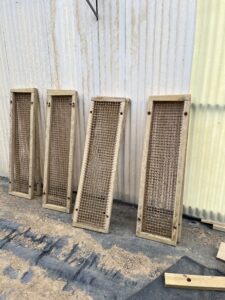
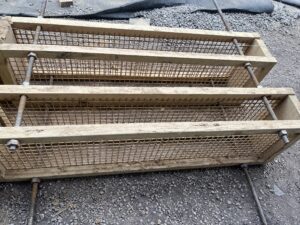
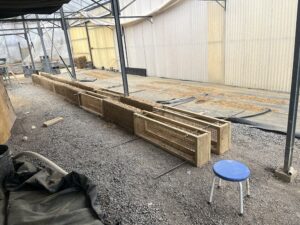
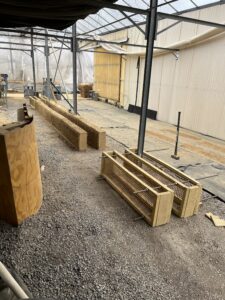
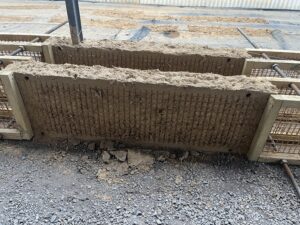
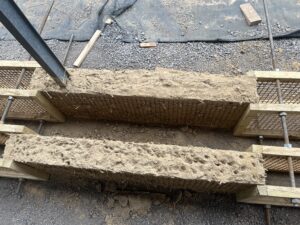
Ribbing to hold tin top
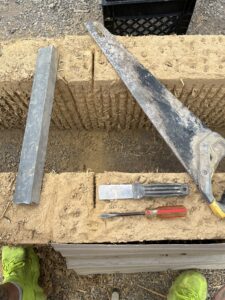
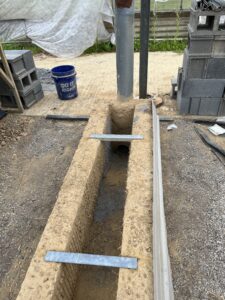
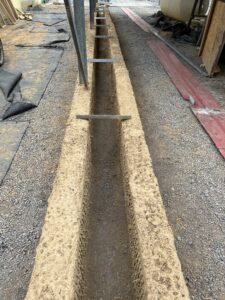
Tin top and Cobb over tin. Skinning with concrete.
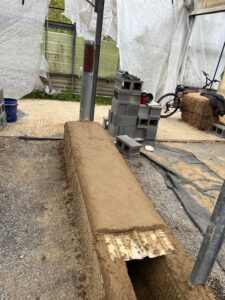
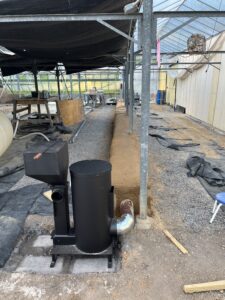
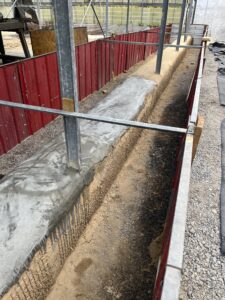
Exhaust and Chimney. Inline fan.
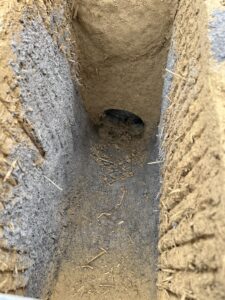
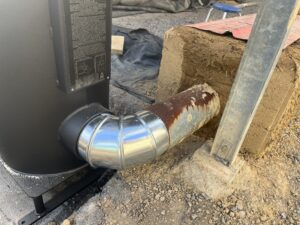

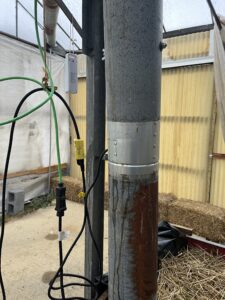
Building aquifer with french drain, pond liner, and sand.
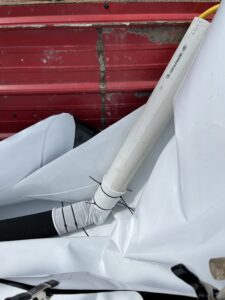
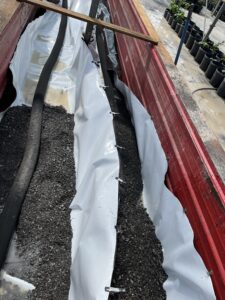
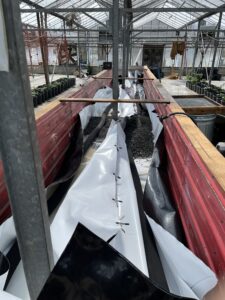
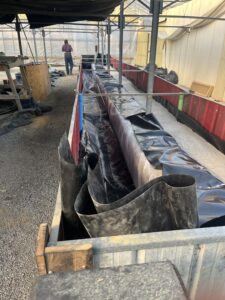
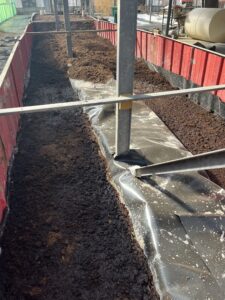
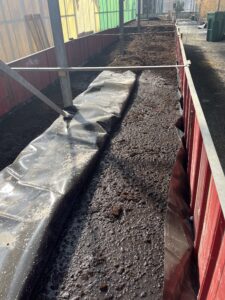
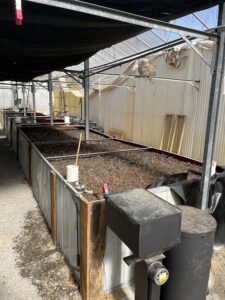
Rocket stove. Pellets.
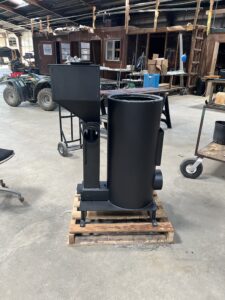
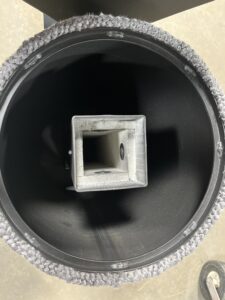
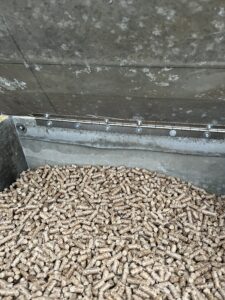
Automatic watering.
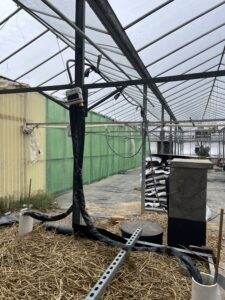
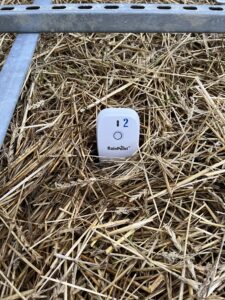
Additionally, we pivoted away from Raspberry Pi for the interim and shifted to RainPoint sensors coupled with HomeGar.
Data
Soil Temperatures by week. (#s 2-7 are in test bed, #8 is control)
Soil Moisture by week. (#s 2-7 are in test bed, #8 is control)
Ambient Temperature by week. (#s 9-11 are in tent of test bed, #s 15-17 are near test bed (20' away), and #s 18-20 are in control area)
Ambient Humidity by week. (#s 9-11 are in tent of test bed, #s 15-17 are near test bed (20' away), and #s 18-20 are in control area)
